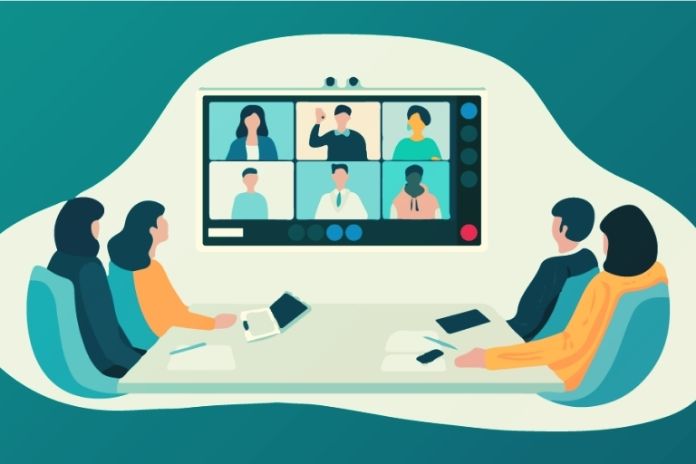Multilingual Communication: If you asked to describe professional activity, you probably think primarily special tasks & less communication. Multilingual communication is often part of everyday work. Communication may be part of almost every professional activity, but that does not mean that it is always smooth and easy for everyone.
Misunderstandings, feedback that leads nowhere, or the misunderstood content of an email: communication can be complicated even in the mother tongue, and multilingual communication often has to be trained first. There is a lot to pay attention to in companies where different languages and cultures come together.
Multilingual Communication Is Now Part Of Everyday Work
We find ourselves in an increasingly international environment where multilingual communication is increasingly a part of everyday work. In particular, it becomes clear how important language skills are in the workplace in the technology sector. Many IT companies expanded their business during the pandemic thanks to increased demand, which also led to more new hires, as a current study by Bitkom confirms. IT companies are increasingly dependent on external employees and specialists from other countries.
Multilingual communication is also becoming the standard since this use is becoming more common in a globalized and networked economy. But language barriers and cultural differences often make internal and external communication a challenge, especially when it comes to specialist jargon and technical issues.
Spatial Distance Changes The Need For Communication
Multilingual IT teams are often spread across many countries and time zones. Advances in communication technology make exchanges easier, but the additional challenges of geographical distance and different languages can disrupt work processes. Digital learning formats such as language tandems with international employees can promote cultural exchange from a distance and increase team motivation. In the case of conflicts that are much more difficult to resolve digitally, the role of language and culture-sensitive mediators can also be specifically strengthened.
Different Language Skills Lead To Misunderstandings
Well-functioning communication is challenging when everyone speaks the same language. In multilingual teams, the workload for employees is also still unevenly distributed. What works by itself for native speakers means extra work for others. Language barriers and the resulting additional workload can hurt team satisfaction. On the other hand, overcoming these language barriers can even tighten internal processes and convey a feeling of psychological security. This leads to better results, for example, through targeted further training offers for language learning.
In another language, you can often not communicate as precisely as you would like. Many important details fall by the wayside in day-to-day interaction. In complex IT projects that require technical accuracy, both the need for coordination and the potential for conflict increase. In the worst case, the results suffer as well. Targeted language training can help here, in which vocabulary from everyday work is practiced, such as giving presentations, writing emails, and holding discussions on specialist topics.
Multilingual Communication: Differentiating Between Linguistic And Technical Competence
Expert Knowledge Or Not: If you suddenly find yourself confronted with, for example, having to give a lecture in a different language or presenting a proposed solution to a problem to colleagues who speak foreign languages, it can quickly happen that you are not only misunderstood but also less assessed competently. According to several scientific studies, the talents and skills of employees whose mother tongue is not the predominant working language are often underestimated.
This tendency can be detrimental in IT organizations, where an international workforce is critical to maintaining efficiency and project completion. However, if employees have the feeling that the corporate culture actively embraces multilingualism, they feel respected and included, communicate better and receive messages more effectively. To make multilingualism “visible,” even small gestures such as to hang up the company’s mission statement in all employees’ languages, but also larger steps, such as acquiring new languages, is an important development goal for everyone.
Cultural Differences Can Also Be Seen In The Style Of Communication
Challenges in international teams can often be traced back to prejudices and stereotypes. These are associated with different cultures and can explain certain behaviors, even if they are not the case. Of course, this increases the potential for conflict among employees.
Initiatives such as team events, where you can learn more about the cultural backgrounds of the workforce, strengthen the transcultural identity. In times of home office and hybrid work, digital Lunch & Learns are also a good way to reach the workforce from home. Learning languages together, in turn, promotes diversity and strengthens the global mindset of the team.
Implement Good Cooperation In IT Teams
So how can good cooperation in IT teams across language barriers be best designed? Good, multilingual communication will not find its way into companies overnight. This requires time and suitable measures to respond individually to the needs of employees. For example, if a company aims to make English the working language, it also must be patient because it takes time to bring all employees to a similar language level. But the investment in language learning is rewarded. Learning a language together also positively affects team cohesion and is, therefore, an investment in satisfied employees.
ALSO READ: Security Risks: How Our Data Centers Can Be Safer

